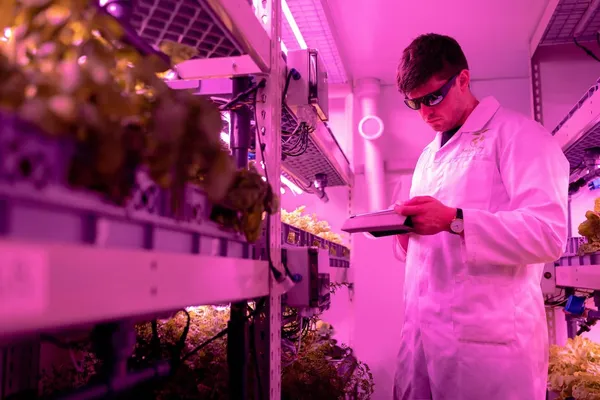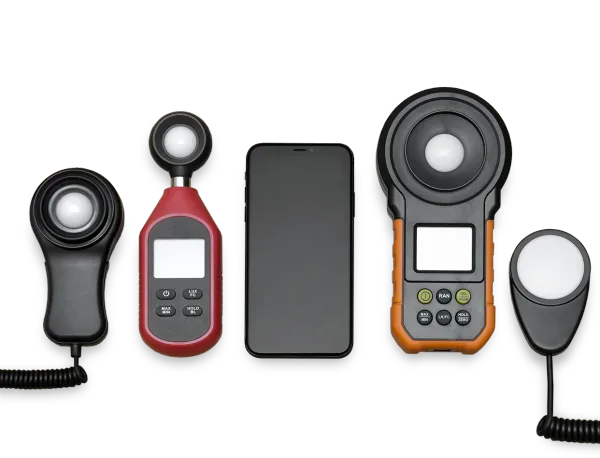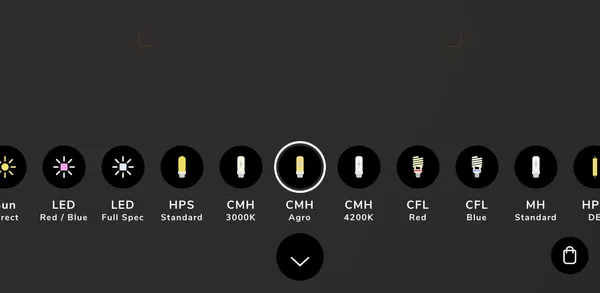
Auto-Translate
How to Measure Light With Photone
Get started on measuring light with Photone
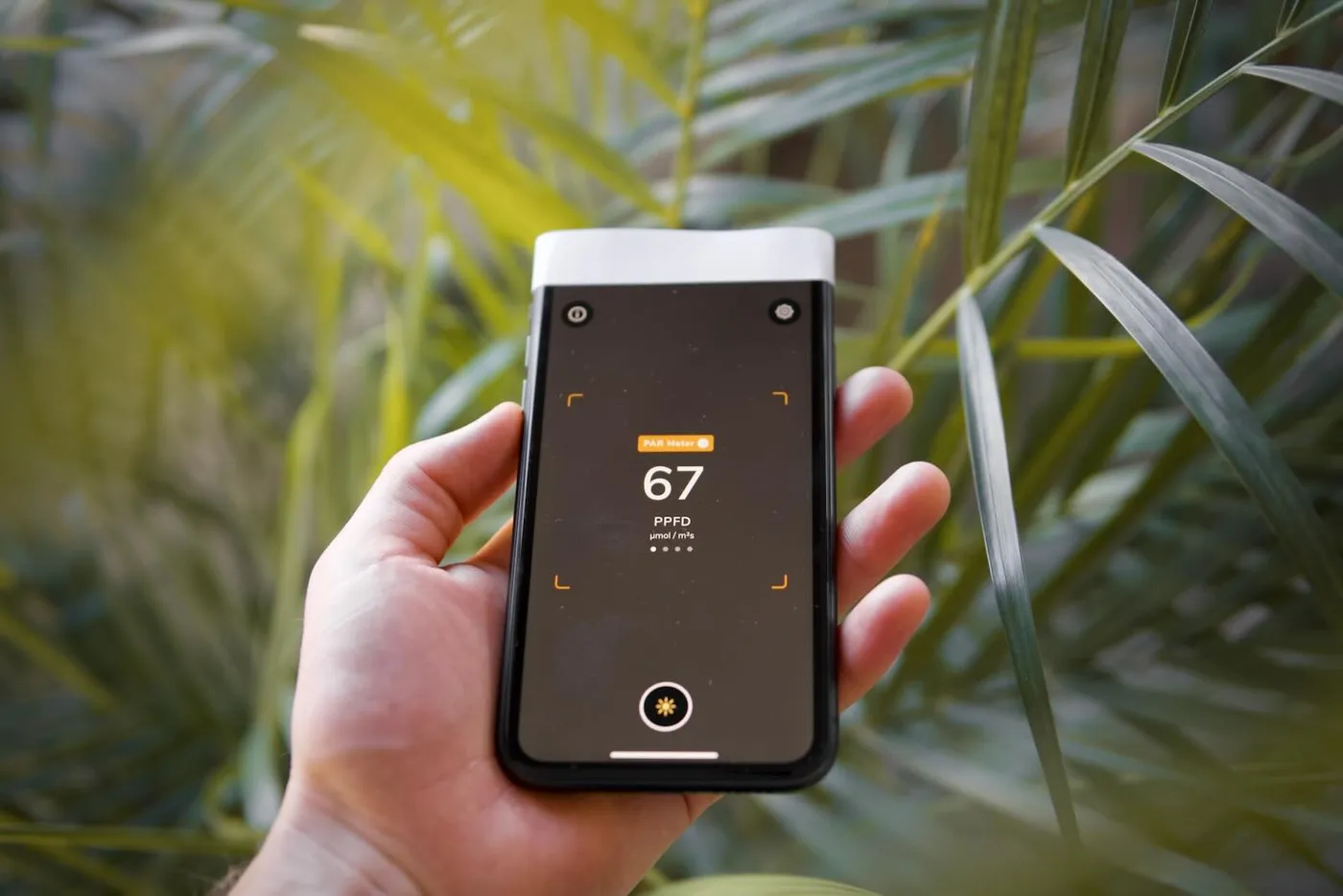
As a plant owner you’re interested in measuring the incident light on your plants’ leaves, which is what makes them thrive. Light impacting a surface is called light intensity (intensity = energy per unit area). Photone measures light intensity by using the camera as a light sensor.
How Photone Works
To measure light, Photone configures the camera in a specific way and takes many images in a row. An image is in fact nothing else than a representation of how much light has entered the camera lens and which colors of light were present at a given point in time. By analyzing the raw image and the corresponding meta data, Photone’s measurement algorithm can then calculate the current light intensity and color temperature.
Thus, the camera should always point at your light source so you measure incident light. By “filming” your plants the camera would measure light reflected by the plants. This is why Photone uses the front (selfie) camera and not one of the back cameras.
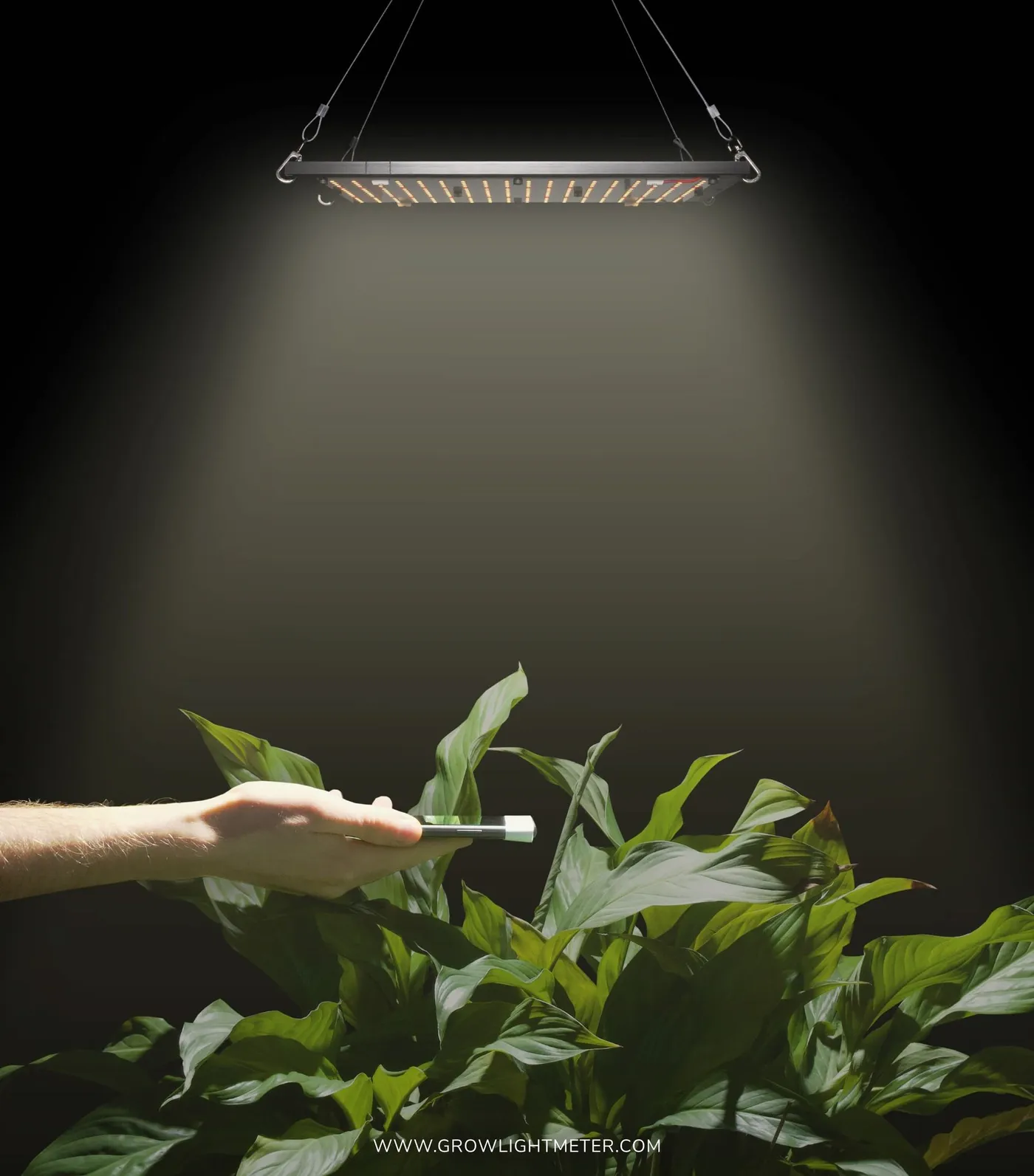
How to Set up Photone
How to Take a Measurement
Taking a measurement is simple: First, select a measurement value by swiping left or right on the main screen. Then, place your device on top of your plants’ canopy.
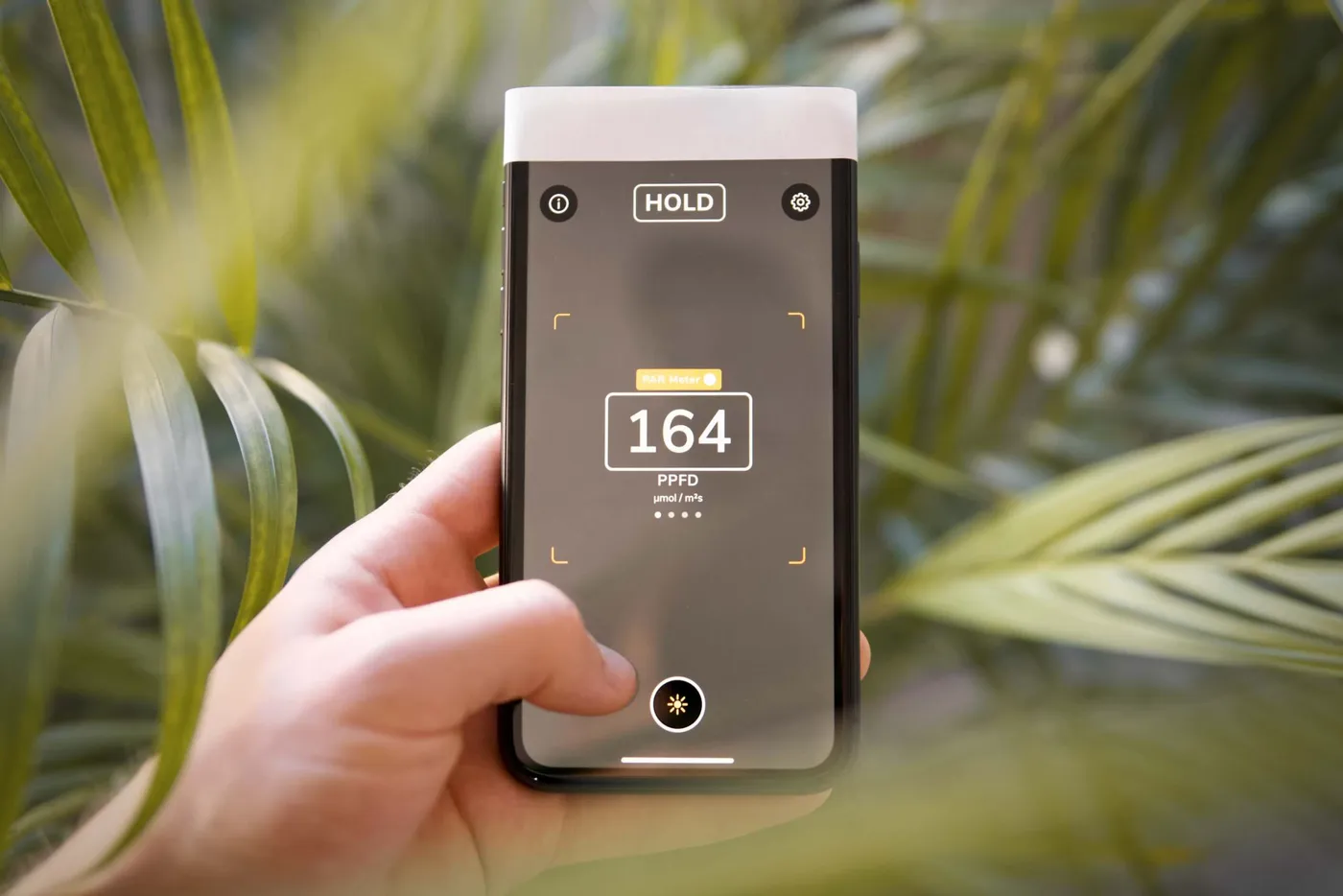
Check the guide below to see all light measurement values and units that are available on Photone:

Need to Measure Under Water?
If you have an aquarium and want to measure light intensity inside the tank, check out the guide on underwater measurements:

Not Measuring What You Expect?
Measuring light can be a complex task. But don't worry, we've got you covered. Learn more about common mistakes and how to fix them:
